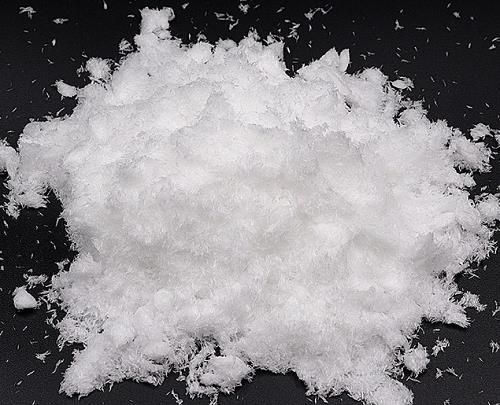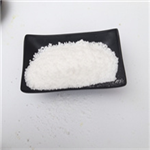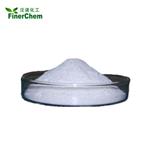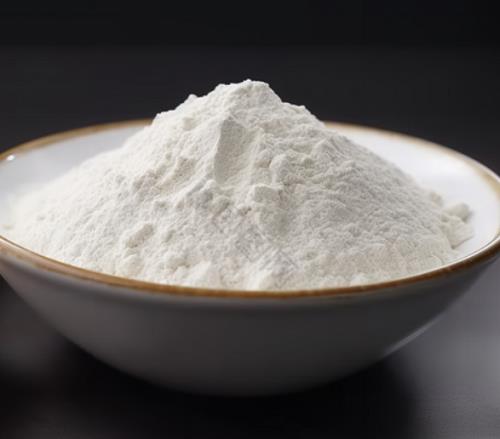Isobutaneboronic Acid: Residual Solvent Determination & Derivatization
Isobutaneboronic acid is also known as isobutylboronic acid. Isobutaneboronic acid has been used to synthesize potent and selective dipeptidyl boronic acid proteasome inhibitors, which are promising therapeutics to treat cancer and inflammatory diseases.

Determination of residual solvents in Isobutaneboronic acid
Organic solvents are indispensable part of a synthesis route to active pharmaceutical compounds. Solvent residues are undesirable in pharmaceutical substances, excipients and products and their concentrations are controlled according to International Committee for Harmonization (ICH) guidelines for residual solvents (RS). Relative simplicity of sample preparation, sensitivity and elimination of GC system contamination by unwanted non-volatile substances belong to the main benefits of the headspace technique. However, analysis of some specific matrices for the RS content requires a special sample pretreatment. One of these specific cases is determination of RS in Isobutaneboronic acid (IBBA), which is used as a crucial reactant in the last step of Bortezomib synthesis. The issue in determination of RS in IBBA lies in its volatility. Based on our findings, IBBA exhibits a significant vapour pressure below its melting point, passes to the gas phase and attacks a stationary phase of an analytical column during the headspace analysis. After about 20 analyses of IBBA samples, a stationary phase becomes damaged to such an extent that it is not suitable for further use, especially for determination of alcohols. Therefore, it is necessary to include a process of conversion of Isobutaneboronic acid into a less volatile and less reactive form during the sample preparation to avoid interference.[1]
Masking Solution (MS) was prepared by weighing accurately about 11 g of DAN and 2.5 g of DABCO into a 50-mL volumetric flask, dissolving in about 40 ml of BA under heating at 60°C for 15 min, cooling to laboratory temperature and filling to the mark with BA. About 50 mg of the sample was accurately weighed into a 20 mL headspace vial, exactly 0.5 mL of MS was added by a gas tight syringe, the vial was flushed with argon and sealed immediately. The masking reaction between Isobutaneboronic acid and DAN was carried out in an oven at 50°C for 60 min. After 10 min of heating, the vial was mixed gently till full dissolution of IBBA sample. After incubation and equilibration 1.0 mL of gaseous phase was injected to the GC. Single analysis from each vial was performed. Exactly 0.5 mL of MS was used as a blank. Extensive damage of the capillary GC column after several headspace analyses of IBBA samples required the development of the alternative method allowing determination of RS without negative influence on the analytical column. Masking derivatization approach was adopted using DAN as a suitable reagent converting volatile reactive Isobutaneboronic acid to the less volatile and less reactive 2-(2-methylpropyl)-2,3-dihydro-1H-naphtho[1,8-de][1,3,2]diazaborine.
Data clearly showed low recovery of polar compounds after 20 injections of underivatized Isobutaneboronic acid (e.g. 64% for 2-propanol) in comparison to almost unaffected results after 20 injections of derivatized IBBA (e.g. more than 99% for 2-propanol). Chromatograms of operational standard mixture obtained on the new column and on the same column after 40 injections of derivatized Isobutaneboronic acid samples are given in Supporting Information (Figure S4). The comparison unambiguously proves the positive influence of the masking derivatization which protects the analytical column, improves stability of the system and ensures data quality in routine analysis. The method for the determination of residual solvents in IBBA has been proposed, optimized, and validated. The method employs derivatization of the excess of IBBA with DAN to form a stable nonvolatile compound, to block the transfer of IBBA to the headspace and protect the GC column from the harmful effect of Isobutaneboronic acid. The concept of masking derivatization opens new possibilities in analysis of trace impurities in excess of highly reactive compound(s).
References
[1]Papoušek, Roman et al. “Determination of residual solvents in isobutylboronic acid: Masking derivatization improves stability of GC column.” Journal of separation science vol. 42,8 (2019): 1629-1633. doi:10.1002/jssc.201800968
See also
Lastest Price from Isobutaneboronic acid manufacturers

US $10.00/KG2025-04-21
- CAS:
- 84110-40-7
- Min. Order:
- 100KG
- Purity:
- 99%
- Supply Ability:
- 100 mt

US $11.00/KG2025-04-21
- CAS:
- 84110-40-7
- Min. Order:
- 1KG
- Purity:
- 99%
- Supply Ability:
- 100mt


